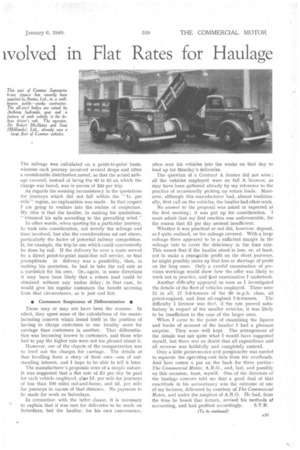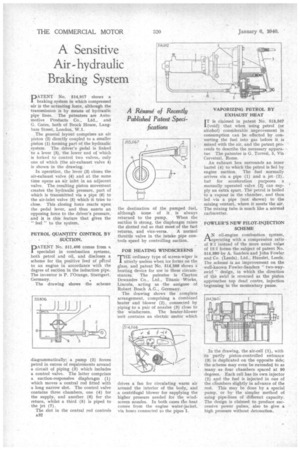American Livestock "Motors" to Market
Page 41

Page 42

If you've noticed an error in this article please click here to report it so we can fix it.
MORE than, half of all beef cattle, calves, hogs, sheep and lambs received at 17 major livestock markets in the United States, is now driven to the stockyards in commercial motor vehicles. Beginning with 1925, there has been a rapid increaseibin the percentage of animals transported by road, instead of being shipped by. rail —from 7.28 per cent. in 1925 to 51.11 per cent. in 1936 and 52.05 per cent. in 1937. Translated into numbers, these percentages represent 27,104,590 head in 1936 and 24,159,415 in 1937, out of total receipts of 46,415,024 last year.
Even at the Chicago stockyards, the largest in the world and located in a city that is a great railway centre, the motor " drive-ins " comprised 31.74 • per cent, of the total receipts in 1937. At the Indianapolis yards they constituted 94.41 per cent., and at Sioux Falls, in the middle-west farming and livestock country, they amounted to 97.23 per cent. These data are from an official report of the United States Department of Agriculture. The growth of " drive-ins" is shown, year by year, in the accompanying graph prepared from a Government report by the International Harvester Co.
Hauling livestock by motor has important advantages to farmers, more than half of whom derives cash income from meat animals. Even on hauls up.
to evera.1 hundred miles, a load can be taken to market by road quicker than it can by rail, so as to take advantage of a rise in prices reported to the grower by telephone or radio. There are fewer loadings and unloadings of the stock, smoother riding without jolting starts and stops, less crowding and less liability of injury from trampling, whilst the runs can be made at night in hot weather.
Because of these factors, the cattle arrive at market in prime condition, and bring better prices, than when they have made long, slow journeys in railway trucks and have lost weight en route. Also, the farmer can profitably make smaller shipments, in whim strange cattle are not mixed and prone to fight. He can select and send is stock to market only when it is fully fattened and will command the best prices.
Farmers, as a general group, form the largest single class of commercialmotor user in America. Approximately one-quarter of all lorries are used in the agricultural industry. They have become essential equipment for hauling dairy products, grain, hay, cotton, fruits, vegetables, chickens and eggs, and for bringing to the farms, ranches and orchards all the necessary supplies for carrying on farming activities.
They have increased the marketing and purchasing radii of the farmer enormously, enabling him to sell where he can get the highest offers, and to buy whatever he needs where the prices are lowest. Their general use tends also to stabilize the prices of farm products in any given farming area. In conjunction with other time and labour-saving equir:nent, the use of commercial motors has beca an important factor in making the American farmer an efficient, low-cost producer.
The modern, fast, easily handled lorry is often driven by the farmer's wife, or a son or daughter, while the farmer himself remains on the land to operate a tractor or do other heavy work in a busy season.
Perishable fruits, berries and vegetables are rushed by motor to markets in the big northern cities, often from long distances. Loads of five tons are driven 1,000 miles or more from Florida to New York City, in winter and early spring, in 48 to 60 hours, running day and night, with drivers alternating at the wheel.
The great network of improved highways has enabled many old farming districts to be turned to the production of more profitable, specialized. perishable crops that can now be hauled quickly to distant markets. which formerly were inaccessible for such produce.
Dairying has thus been made remunerative hundreds of miles from big cities, as fresh milk is hauled in big refrigerator lorries and in huge glass-lined tanks on tractor and trailer combinations. The New York City " milk shed " embraces large areas et more than half a dozen States, with a radius of 300 miles.
In these and in other ways the commercial motor is the chief factor in bringing a h'her degree of well-being to all parts of the country, including the former remote and isolated rural areas.












































































